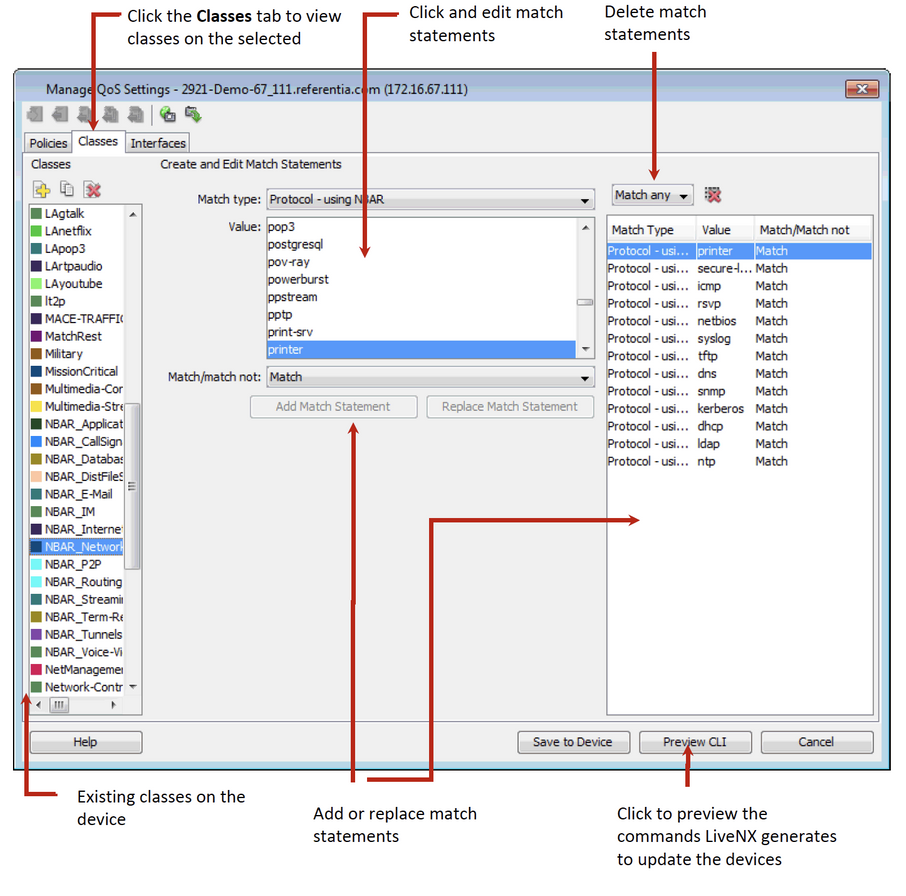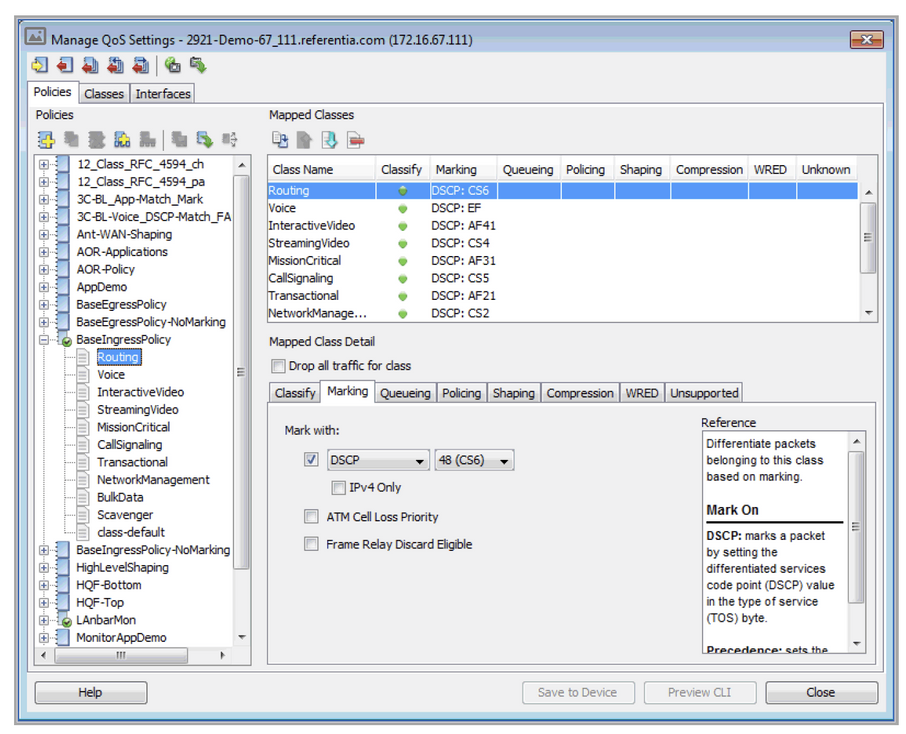Manage QoS Settings Screen
You can create and edit the device configuration elements in any order. Click Preview CLI at any time to see the commands that will be used to send the changes to the device. If you enter invalid or conflicting values, an error will appear in the affected area, and you will not be able to save or preview your changes until the error has been corrected.
The main Manage QoS Settings screen provides all the QoS capabilities of the router within a single dialog box. This dialog box can be accessed by right-clicking on any of the devices or their interfaces, or from the QoS menu. The tree view at left shows existing policies for the device and the Mapped Classes list shows the classes that make up the policy. The tabs below indicate the various QoS features available for the selected class.


The marking tab allows device configuration control for DSCP or IP Precedence, ATM Cell Loss Priority and Frame Relay Discard Eligible. Enable the check box next to the DSCP drop-down and then select either DSCP or IP Precedence. After choosing DSCP or IP Precedence, use the adjacent drop-down box to define the DSCP or IP Precedence value. Enable the IPv4 check box to mark only IPv4 packets and disable the check box to mark IPv4 and IPv6 packets.
• Enable the ATM Cell Loss Priority check box to mark the ATM CLP bit.
• Enable the Frame Relay Discard Eligible check box to mark the FR DE bit.
• Default for all three check boxes is disabled.

Enable queueing capability by selecting either Class-based, Priority or Fair in the Queueing type: drop-down. The fourth option is None. Default is None. The Priority option is available when selecting a new class within a policy.
If Class-based is selected, then type in the desired Rate in either Percent (amount of guaranteed bandwidth as an absolute percent of available bandwidth), Percent of remaining (amount of guaranteed bandwidth as a relative percent of available bandwidth) or Kbps. Enable Queue depth to define the maximum number of packets a queue can hold for a class policy configured in a policy map. Enable Fair Queueing to extend standard fair queueing functionality to provide support for user-defined traffic classes.
If Fair is selected, enable Queue depth to define the maximum number of packets a queue can hold for a class policy configured in a policy map.